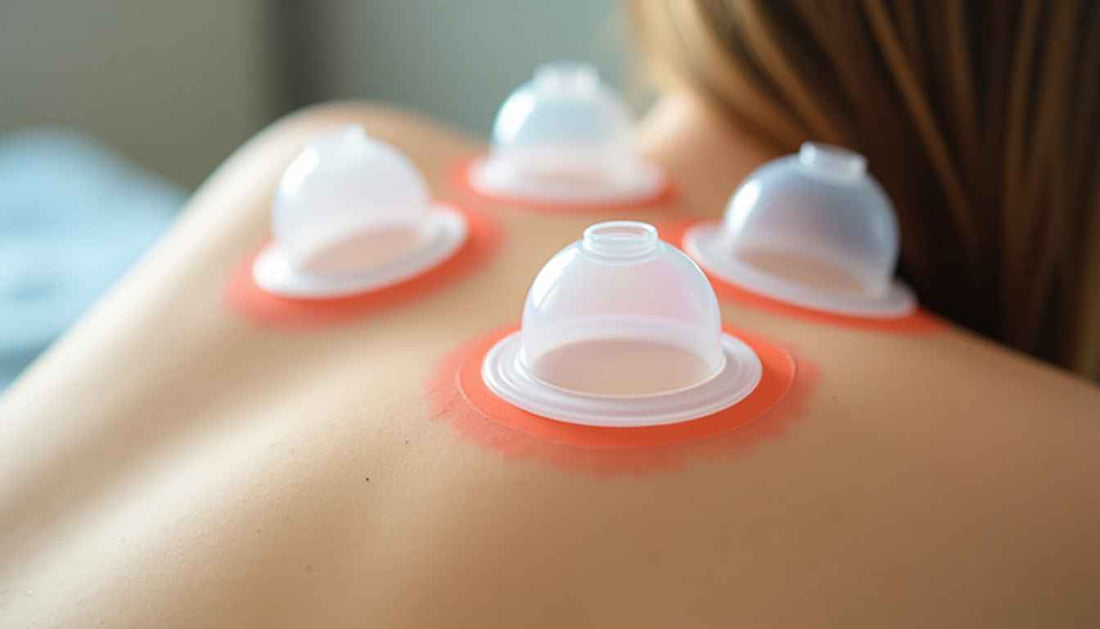
Cupping for Pain Relief: Does It Really Work?
Share
Struggling with chronic back, neck, or joint pain? Many are turning to natural solutions like cupping for pain relief. Rooted in ancient medicine and increasingly used by modern therapists, cupping therapy is believed to improve circulation, release muscle tension, and reduce inflammation—naturally and without side effects. In this article, we explore how cupping works for pain, what the science says, and whether it's the right choice for your pain management routine.
Featured Snippet Answer:
Cupping for pain relief works by increasing blood flow, reducing muscle tension, and decreasing inflammation. The suction created by the cups stimulates healing in soft tissues and may alleviate chronic pain symptoms.
How Does Cupping Help with Pain?
Cupping creates a vacuum on the skin, drawing blood to the surface and increasing circulation. This process:
- Stimulates healing by bringing oxygen and nutrients to injured tissues
- Reduces tension in tight or knotted muscles
- Lowers inflammation through lymphatic drainage
- Desensitizes pain receptors in the skin and fascia
Common Pain Conditions Treated with Cupping
-
Back and Neck Pain
Cupping is frequently used for chronic lower back pain and neck tension. -
Joint Pain (Arthritis)
Can ease discomfort in the knees, shoulders, and elbows by reducing inflammation. -
Fibromyalgia
Patients report reduced sensitivity and fatigue after sessions. -
Headaches and Migraines
Cupping on the shoulders and neck may reduce tension-type headaches. -
Muscle Recovery Post-Workout
Enhances recovery, reduces soreness, and helps prevent strain injuries.
Types of Cupping for Pain Relief
Dry Cupping:
Most commonly used for muscle tension and circulation improvement.
Wet Cupping:
Combines suction with controlled bloodletting to reduce toxins and inflammation.
Moving Cupping:
Cups are glided over oiled skin to release tension over larger muscle areas.
What Does the Research Say?
- A 2015 meta-analysis found that cupping was more effective than no treatment for pain, especially in neck and back pain.
- A 2018 study published in the Journal of Traditional and Complementary Medicine showed significant pain reduction in fibromyalgia patients after cupping.
While more studies are needed, early evidence supports cupping as a complementary pain treatment.
What to Expect During a Pain Relief Session
- A licensed practitioner will assess your pain and apply cups to affected areas.
- Sessions last 20–40 minutes.
- Red marks may appear and last a few days—these are not bruises but signs of blood flow.
- Mild soreness or warmth is normal after treatment.
FAQs
Does cupping therapy hurt?
Most people describe the feeling as tightness or pressure, not pain. Some find it relaxing.
How long do the benefits last?
Relief may last several days to a few weeks, depending on the severity of the condition.
Can cupping replace medication?
Cupping can complement but should not replace medical treatment unless advised by your healthcare provider.
How many sessions do I need?
Some find relief after 1–2 sessions; chronic pain may require ongoing treatments weekly or bi-weekly.
Internal Links:
- Cupping Therapy Benefits
- Cupping Therapy for Muscle Recovery
- Cupping Therapy for Migraines
- Cupping Therapy Explained
CTA:
Ready to try cupping for natural pain relief? Download our Free Pain Management with Cupping Guide and find a certified practitioner near you. Take the first step toward a pain-free life—naturally.
